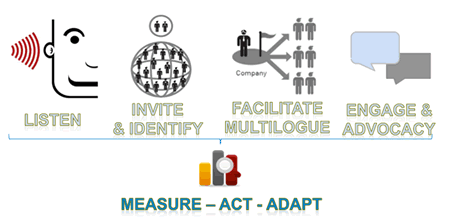
A while back, I was asked to participate in the creation of a collaborative white paper, initiated by Selligent (for the record: a former customer). One of the other contributors was Jan Van Aken. Jan ran Ogilvy Belgium before moving to Ogilvy & Mather Global and then becomin a Partner at Futurelab.
Jan’s contribution to the paper was called “The Power of Powerlessness.” With the advent of social media, each consumer became a ‘media transmitter’, Jan says. Today, we connect around interests, values and ideas. The traditional socio-demographic target group is not enough anymore. On top of that, target groups change faster than ever before since our interests are constantly shifting with the overwhelming realm of possibilities we have at our disposal.
Combine that with the decreasing trust of consumers and there you have it: people build their own, personal value systems. They decide what they like or not. They don’t need brands or governments and other social ecosystems and institutions to do so anymore.
When we start from a model that is dominated by quantitative criteria (reach, GRPs, open rates, click rates,…) and don’t take qualitative elements into account enough (relevance, impact, context,…) we, as marketers, cannot respond to these changes, Jan says. That’s why we are powerless in regard to consumers who decide whether or not they allow us in their lives.
Sales and marketing have always been about social interaction
The trick is to find power within this factual powerlessness. And the only answer to it is customer-centricity: letting go of what we want alone and focusing on what customers want. Or in other words: accepting the power shifts and evolving accordingly. Facilitating.
Selling (and marketing), Jan says, was always fundamentally a process of social interaction. It’s nothing new: in recent decennia, it simply got buried under the obsession about reach and the pressure of quarterly results. Indeed, it’s about understanding again that markets are conversations as “The Cluetrain Manifesto” reminded us.
Social media marketing is a process whereby marketers listen and create spheres of interests, needs and expectations, Jan continues. They are the starting points of a good content strategy and an invitation to the connected consumers to step forward and tell us how we can help them, using all possible ways to capture what they say and do – and, obviously, respond to it.
It allows us to serve the consumer in an increasingly personal way, creating engagement, interactions and – ultimately – loyalty. Direct – and other – marketers have new data to take into account: motivations, attitudes, value models and interests.
The consumer increasingly calls the shots and the traditional view on direct marketing can and should be broadened.
Turn powerlessness into a new form of power by letting go of the illusion of control.


